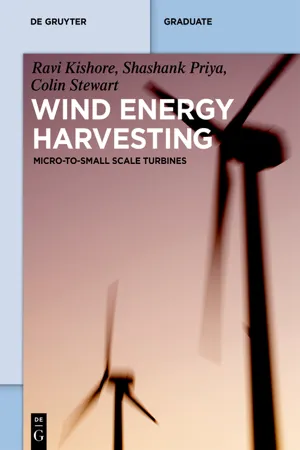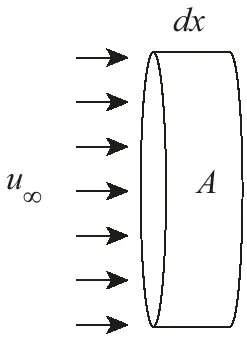
Wind Energy Harvesting
Micro-to-Small Scale Turbines
- 173 pages
- English
- ePUB (mobile friendly)
- Available on iOS & Android
About this book
This book provides the fundamental concepts required for the development of an efficient small-scale wind turbine. For centuries, engineers and scientists have used wind turbines of all shapes and sizes to harvest wind energy. Large-scale wind turbines have been successful at producing great amounts of power when deployed in sites with vast, open space, such as in fi elds or in offshore waters. For environments with limited space, such as dense urban environments, small-scale wind turbines are an attractive alternative for taking advantage of the ubiquity of wind. However, many of today's tools for aerodynamic design and analysis were originally developed for large-scale turbines and do not scale down to these smaller devices. Arranged in a systematic and comprehensive manner, complete with supporting examples, Wind Energy Harvesting: Micro- To Small-Scale Turbines is a useful reference for undergraduate and graduate level classes on energy harvesting, sustainable energy, and fl uid dynamics, and an introduction to the field for non-technical readers.
Frequently asked questions
- Essential is ideal for learners and professionals who enjoy exploring a wide range of subjects. Access the Essential Library with 800,000+ trusted titles and best-sellers across business, personal growth, and the humanities. Includes unlimited reading time and Standard Read Aloud voice.
- Complete: Perfect for advanced learners and researchers needing full, unrestricted access. Unlock 1.4M+ books across hundreds of subjects, including academic and specialized titles. The Complete Plan also includes advanced features like Premium Read Aloud and Research Assistant.
Please note we cannot support devices running on iOS 13 and Android 7 or earlier. Learn more about using the app.
Information
1Introduction
1.1Wind energy







Table of contents
- Cover
- Title Page
- Copyright
- Preface
- Contents
- List of Figures
- List of Tables
- 1 Introduction
- 2 Wind turbines
- 3 Components of a small-scale wind turbine
- 4 Aerodynamics of a wind turbine
- 5 Applying BEM to small-scale wind turbine blade design
- 6 CFD analysis of wind turbines: Fundamentals
- 7 CFD analysis of wind turbines: Practical guidelines
- 8 Diffuser-Augmented Small-Scale Wind Turbine
- 9 Unconventional wind energy harvesters
- References
- Index